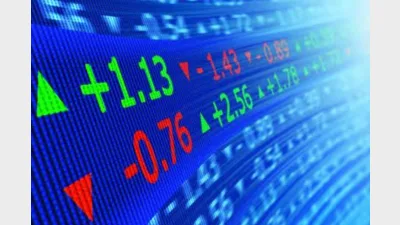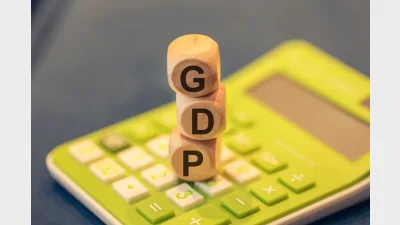Why super funds lean into the sharemarket roller-coaster



While superannuation funds’ high exposure to sharemarkets spurred concern in early August amid significant market wobbles, AMP’s chief economist Shane Oliver said that growth assets like shares provide superior long-term returns despite their susceptibility to volatility.
In his latest market note, Oliver said that recent market instability spurred by fears of a US economic slowdown, a surprise decision by the Bank of Japan to lift interest rates, and an unwinding of yen carry trade should not hamper the outlook for long-term investments like super.
Instead, he said, headlines such as “Aussie share market loses $100bn in bloodbath” should be viewed with caution.
“Two weeks ago, there were lots of headlines like that after share markets fell sharply in response to US recession fears. But such headlines are nothing new. After such falls, the usual questions are: What caused the fall? What’s the outlook? And what does it mean for superannuation?” Oliver said.
“The correct answer to the latter should be something like: ‘Nothing really, as super is a long-term investment and share market volatility is normal’.
“But that can seem like marketing spin. However, the reality is that – except for those who are into trading – shares and superannuation really are long-term investments.”
Oliver said that while typical super funds have a bias towards shares and other growth assets, they do hold some exposure to defensive assets like bonds and cash in order to avoid excessive short-term volatility.
“This approach seeks to take advantage of the power of compound interest,” he said, highlighting AMP modelling that suggests that a typical $100 investment in Australian shares in 1926 will have witnessed growth of 11.2 per cent per annum to date.
In comparison, a similar investment in bonds would have returned 6.5 per cent per annum, while Australian cash would have returned 5.2 per cent over the same time period.
“Because shares and property provide higher returns over long periods the value of an investment in them compounds to a much higher amount over time,” Oliver said.
“So, it makes sense to have a decent exposure to them.
“The higher return from shares and other growth assets reflects compensation for their greater risk, seen in volatility & illiquidity, versus cash & bonds.”
While conceding that inventors don’t have 100 years to save for retirement, Oliver said “our natural tendency is to think very short term”.
“And this is where the problem starts,” he said.
“While it’s hard given the bombardment of financial news these days it makes sense to look at your returns less because then are you more likely to get positive news and less likely to make rash decisions or end up adopting an investment strategy that is too cautious.”
Earlier this month, research house Chant West reported that a typical growth fund, which holds on average a 55 per cent allocation to sharemarkets, recorded a significant decline in early August amid the market sell-off.
But funds quickly went on to demonstrate a resilient recovery, it said.
“Members should also take comfort in the fact that most have their super invested in well-diversified portfolios that have their investment exposure spread across a wide range of asset classes,” said Chant West senior investment research manager Mano Mohankumar.
“This helps provide a smoother return journey by cushioning the blow during periods of share market volatility, while capturing a meaningful proportion of the upside when share markets perform well.”
Sharemarkets shine over the long run
In his market note, AMP’s Oliver also cautioned against attempting to time short-term market moves, which he deemed a difficult task.
“With the benefit of hindsight many swings in markets like the tech boom and bust, the GFC and the plunge and rebound in shares around the COVID pandemic look inevitable and hence forecastable and so it’s natural to think ‘why not give it a go?’ by switching between cash and shares within your super to anticipate market moves. Fair enough,” he said.
“But without a tried and tested market timing process, trying to time the market is difficult.”
He highlighted modelling that found that individuals fully invested in Australian shares from January 1995 would have clocked returns of 9.5 per cent pa. This is in contrast to 12.2 per cent for individuals who tried to time the market and avoided the worst 10 days.
“If you avoided the 40 worst days, it would have been boosted to 17 per cent pa,” Oliver said.
“But this is really hard, and many investors only get out after the bad returns have occurred, just in time to miss some of the best days. For example, if by trying to time the market you miss the 10 best days, the return falls to 7.5 per cent pa. If you miss the 40 best days, it drops to just 3.5 per cent pa.”
Ultimately, the chief economist said the best approach is to recognise that super and shares are long-term investments.
Recommended for you
Economic growth was weaker than expected, once again highlighting an economy largely sustained by population growth and government spending.
In this latest edition, Anna Shelley, CIO at AMP, shares the fund’s approach to current market conditions and where it continues to uncover key opportunities.
The mega fund has announced a $2.2 billion investment in a leading data centre platform, bringing its global real assets portfolio to nearly $60 billion.
In this latest edition, Australian Retirement Trust’s head of global real assets Michael Weaver explains the fund’s approach to finding new opportunities as it surpasses $300 billion in funds under management.













